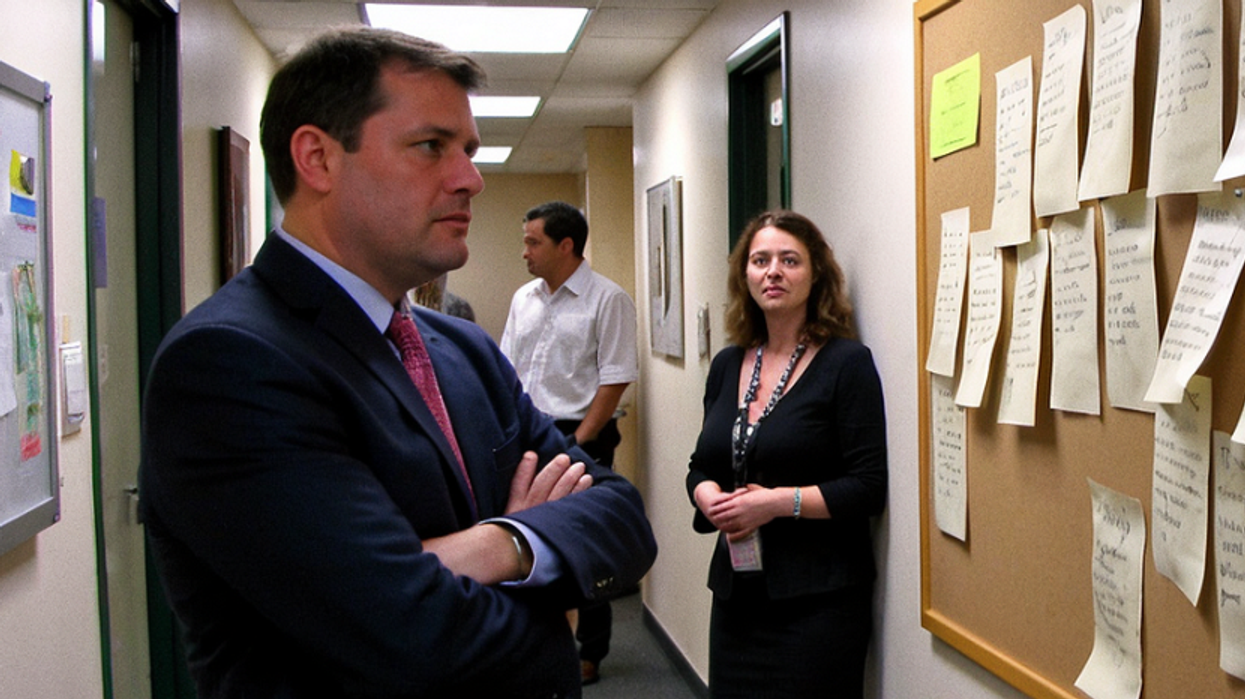When 18-year-old Byron Geldard started feeling pain in his side, he figured it had something to do with hitting the gym too hard. Muscle strain, he thought. But what started as a typical teenage ailment spiraled into a life-threatening discovery—thanks to a test no one ever expected a teenage boy to take.
After visiting his doctor, Byron was told it was likely nothing serious. But scans painted a different picture: a tumor, already spreading to his lungs. “I was told that it was cancer, but they weren’t sure what type,” he recalled.
Yes, they really gave him a pregnancy test
He was referred to the Teenage Cancer Trust unit in Cambridge, UK, where medical staff proposed an idea that seemed more than a little absurd—take a pregnancy test.
"There I was with a positive pregnancy test and something growing inside of me."
— Byron Geldard
Sounds bizarre? There’s a sound medical reason behind it.
Pregnancy tests detect the hormone beta human chorionic gonadotropin (hCG)—a hormone usually associated with pregnancy. But as Dr. Danish Mazhar, a consultant medical oncologist at Cambridge University Hospitals, explained, some testicular tumors also produce hCG. This makes pregnancy tests a quick, if unconventional, tool to help detect the disease in men.
“The pregnancy hormone (HCG) is often (but not always) produced by testicular tumors,” Dr. Mazhar shared. And in advanced cases like Byron’s, the hormone levels can skyrocket.

Dr. Phillip Ho, a physician at Kelsey Seybold Clinic, confirmed that a positive pregnancy test in men is often “a sign of cancer,” according to KPRC. And for Byron, that proved true—his test came back positive, and he was diagnosed with stage 4 testicular cancer.
The weirdest part? That wasn’t even the weirdest part
Byron began chemotherapy immediately. His unusual experience didn’t stop there. Monitoring his “pregnancy hormone” levels became a routine part of treatment. And during surgery prep, he even received an epidural—just like many pregnant women do during childbirth.
"I had to have an epidural like a pregnant woman."
— Byron Geldard
Despite the whirlwind of unconventional diagnostics and pregnancy-like procedures, Byron stayed strong. “It’s really hard to describe how it felt, you don’t come to terms with what’s going on, you just go along with it,” he said. “It took me a while to realize what was happening to me.”
Thanks to early detection and aggressive treatment, Byron beat the odds. Just months later, he was declared cancer-free.
From patient to advocate
Since his recovery, he’s taken on a new role—not just as a survivor, but as an ambassador for the Teenage Cancer Trust. He now uses his story to raise awareness about the realities of cancer in young people and the surprising ways it can be caught.
"Patients don’t really talk about it."
— Teenage Cancer Trust spokesperson
Pregnancy tests as cancer detectors may still be a mystery to many, but they’ve been in use for years in the oncology community. As strange as it may sound, this tool—typically tucked away in women’s health aisles—played a vital role in saving a young man’s life.
If Byron’s story teaches us anything, it’s this: unconventional doesn’t mean ineffective. And sometimes, a bit of weirdness is exactly what’s needed to find the way forward.
Support organizations like the Teenage Cancer Trust and help raise awareness about youth cancer detection. You never know whose life it could save.


























 Image Source: Joshua Potash | Reddit
Image Source: Joshua Potash | Reddit 





